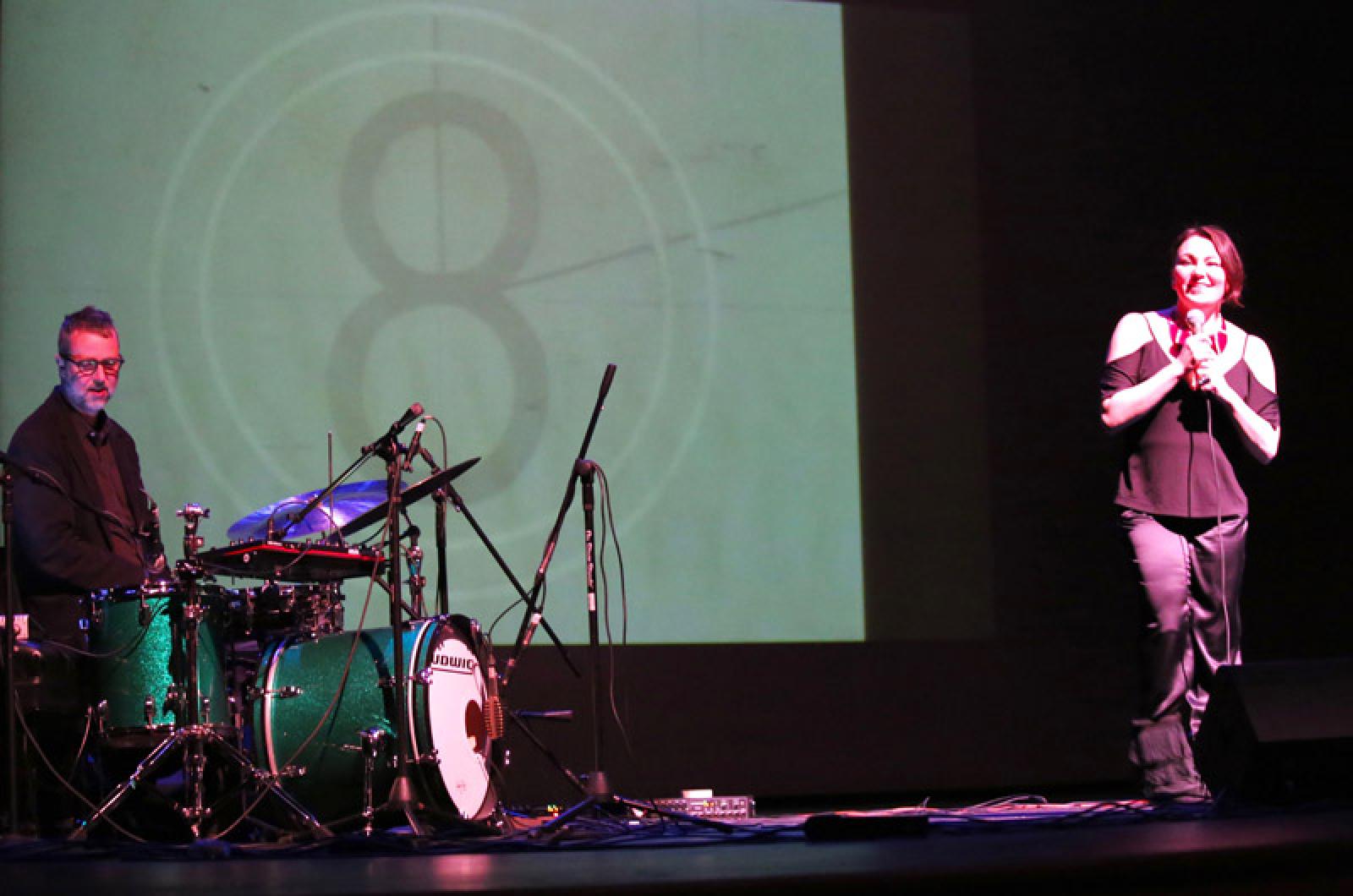Traditional Inuit throat-singing, or katajjaq, is a game played with music, performed in call-and-response style by two women standing face to face and essentially trying to crack each other up.
“It’s a friendly competition,” Inuit singer Tanya Tagaq told an audience of about 150 at the Martha’s Vineyard Performing Arts Center Monday night. “You end up erupting in laughter.”
Though born in the Arctic, Ms. Tagaq herself was isolated from Inuit traditions by the now-discredited Canadian system of residential schools, which aimed at separating children from their aboriginal cultures. She wound up teaching herself katajjaq while attending art college, “because I loved the sound so much,” she said.
Now 41, Ms. Tagaq is celebrated for her radical, solo reinterpretation of the ancient singing style. Wilder and far more avant-garde than the playful tradition, her music has earned her a shelf of Canadian music awards, the honor of being named a Member of the Order of Canada and a four-star review in Rolling Stone magazine for her recent CD Retribution.
With a voice that can plunge to shamanistic depths and soar to a fluttering falsetto, Ms. Tagaq has also toured and recorded with Icelandic artist Bjork and worked with both the Kronos Quartet and a hardcore punk band from Toronto that has an unprintable name.
Monday night at the Performing Arts Center, Ms. Tagaq and her two longtime collaborators, drummer Jean Martin and multi-instrumentalist Jesse Zubot, improvised a live onstage soundtrack to the silent movie Nanook of the North. It’s a program the trio has performed more than once since 2012, when Ms. Tagaq was commissioned by the Toronto International Film Festival to accompany the 1922 film. Each time, she said, the music is different.
“I love that it will never happen this way again,” she said. “Some of what you’re hearing may sound like we’ve practiced a lot, but it’s just our language together that we’ve developed after such a long time.”
Though often billed as the first documentary, Nanook of the North is a controversial work. Not only is it “filmed from a colonial lens,” in Ms. Tagaq’s words, but director Robert Flaherty took vast liberties in his determination to show what he called “Nanook, the kindly, brave, simple Eskimo,” and his clan.
Though the Inuit were hunting with guns by 1922, Mr. Flaherty insisted on filming only spear, harpoon and trap hunting, so his subjects obediently — if laboriously — hauled in fish, a fox, a walrus and a massive seal by hand. Mr. Flaherty also staged a gratuitous scene in which the hunter feigned astonishment at a gramophone and then tried to eat the record.
“I remember watching this film as a child and being frustrated,” Ms. Tagaq told the Vineyard audience.
“That’s not who we are,” she went on. “There’s this desperation to simplify our technology and our culture.”
Mr. Flaherty “misconstrued our culture and misrepresented us to the world, so it’s a fierce honor to be able to do the soundtrack in this contemporary light,” Ms. Tagaq said.
Soft-spoken and almost shy-sounding when she addressed the audience, Ms. Tagaq became a different being when the lights went down and the film began. Gruff panting, guttural humming, deep growling and sudden snarls emerged from the bare-shouldered figure stalking the stage in reflected light from the screen.
Ms. Tagaq’s wordless vocal arsenal also includes hissing, childlike crooning, goblin-like muttering and sled-dog howls. Her voice, with Mr. Martin’s percussion and Mr. Zubot’s violin, synthetic drum and tape loops, wove through the onscreen narrative as if to express the inner lives of the people and animals in the film.
Evoking the heightened pulse of the hunters, pounding percussion and rhythmic panting accompanied scenes of stalking prey and navigating treacherous ice fields. In other scenes, Ms. Tagaq appeared to enter the animals’ world, wailing desolately as a harpooned walrus was hauled ashore in front of its helpless mate.
Audience members appeared riveted by the performance, unable to move or respond for a long moment after the 79-minute film ended and the last notes faded into the air. Then the audience exploded into applause and a standing ovation.
Ms. Tagak’s performance was presented by the Yard as part of its Winter Yard arts series.








Comments
Comment policy »